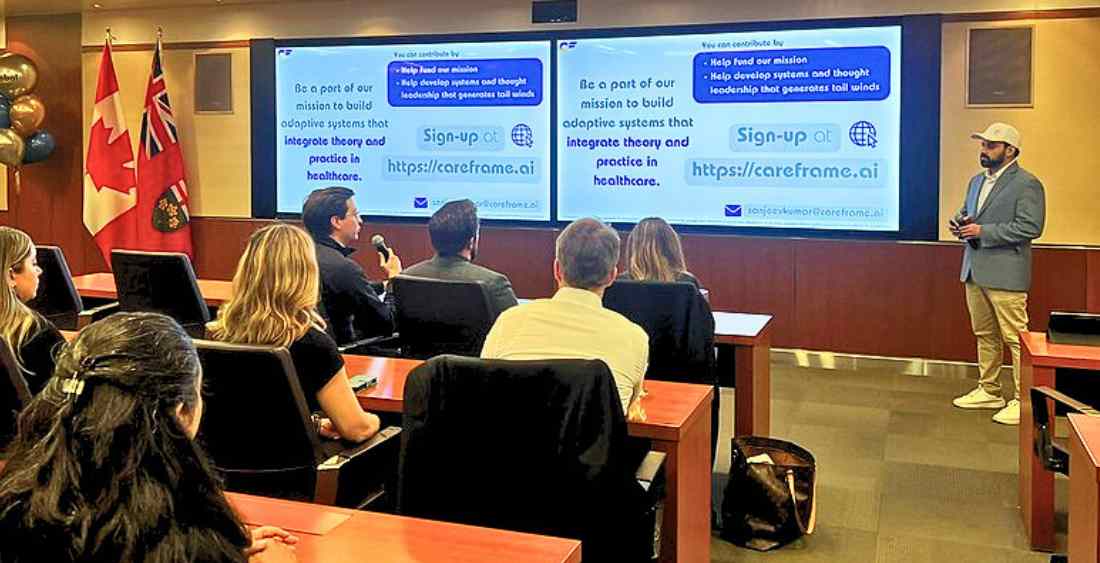“I’ve learned that it’s better to work with technology than against it. Hopefully, we can all adopt this approach moving forward.”
Roberta Popescu, Co-Founder, Xactsize.
Online shopping offers everyday consumers a convenient way to browse and purchase items from the comfort of their homes. However, for retailers, managing online returns and the associated cost implications can present significant challenges. This is where Xactsize steps in.
With their real-time body measurements and virtual try-on capabilities, XactSize is addressing the try-on sizing dilemma directly. By reducing return rates and enhancing customer confidence, they are revolutionising the online shopping experience for online retailers and shoppers .
We had the opportunity to speak with Roberta Popescu, co-founder of Xactsize, to better understand their approach and entrepreneurial journey. Xactsize is an alumni company of our NEA program, a program focused on immigrant founders in technology.
Meet Roberta Popescu
“Hi, I’m Roberta Popescu, one of the co-founders of Xactsize”, she introduces herself. “We’re a company leveraging augmented reality (AR) and artificial intelligence (AI) to provide real-time measurements of the human body. Our innovation addresses the challenge faced by athleisure companies in managing online returns efficiently” she explains.
Looking back on their journey, Roberta recalls, “At first, my co-founder and I started selling leisure products online. But soon, we noticed that we were getting a lot of returns, which was hurting our profits.” She explains that most of these returns were due to sizing issues with their suppliers. “Even though customers were ordering sizes they usually wear from other websites,” she says, “our sizes were a bit different, causing a lot of returns.”
“To address this, we initially developed a measuring tool within our app, resulting in notable improvements. Then, we started helping other online retailers with the same issue,” Roberta explains. Regarding their funding approach, she mentions, “For the most part, we self-funded the initial stages of the company but eventually had to close the business.”
Challenges in Securing Funding for Entrepreneurs
“Throughout our journey, we’ve faced several challenges, one of which is gaining funds as entrepreneurs,” Roberta explains. She talks about the several attempts to revisit banks, but this proved difficult as banks typically require assets as collateral. “However, one can only mortgage a house once, maybe twice if they’re fortunate, before exhausting that option” she adds.
When it comes to raising capital through banks, she believes that good ideas are not enough without tangible business traction. “They’re hesitant to provide funding unless you’ve already established yourself, by which point, ironically, you might not require their assistance,” she explains.
This challenge isn’t exclusive to banks; as it extends to other avenues of fundraising, like angel investors. Reflecting on her experience, she says “Many of the investors we’ve approached insist on having at least one other angel investor join them in the funding round.”.
Regarding how investors perceive female founders, she explains,”It’s not really different from the general perception. Unfortunately, when a female founder is assertive, it’s often perceived as being too aggressive, which can deter people. On the other hand, if the same assertiveness comes from my male co-founder, it’s often viewed more positively just because of his gender”.
Automation and Future Prospects
She explains how the company is well-positioned to become a solution provider to online retailers, thanks to technology.
”With our AR and self-aware AI technologies, our customers can experience a reduction in future returns, offering a sense of predictability. For instance, if an end customer has purchased one item from a retailer, our system can predict their likelihood of purchasing another item and how frequently they might do so,” Roberta explains.
This allows their online retailer clients to either manage expectations for that customer or tailor marketing campaigns and emails more effectively, without bombarding customers with unnecessary messages.


